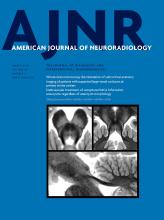Abstract
BACKGROUND AND PURPOSE: The Analysis of Recanalization after Endovascular Treatment of Intracranial Aneurysm (ARETA) prospective study aims to determine factors predicting recurrence after endovascular treatment for intracranial aneurysms. In this publication, we review endovascular techniques and present the study population. Characteristics of treated and untreated unruptured aneurysms were analyzed.
MATERIALS AND METHODS: Sixteen neurointerventional departments prospectively enrolled patients treated for ruptured and unruptured intracranial aneurysms between December 2013 and May 2015. Patient demographics, aneurysm characteristics, and endovascular techniques were recorded.
RESULTS: A total of 1289 patients with 1761 intracranial aneurysms, 835 (47.4%) ruptured, were enrolled. Of these, 1359 intracranial aneurysms were treated by endovascular means. Ruptured intracranial aneurysms were treated by coiling and balloon-assisted coiling in 97.8% of cases. In unruptured intracranial aneurysms, the rates of flow diversion, flow disruption, and stent-assisted coiling were 11.6%, 6.9%, and 7.8%, respectively. Rupture status and aneurysm location, neck diameter, and sac size significantly influenced the chosen technique. Treated unruptured intracranial aneurysms, compared with untreated counterparts, had larger aneurysm sacs (7.6 ± 4.0 versus 3.4 ± 2.0 mm; P < 0.001) and neck dimensions (4.1 ± 2.2 versus 2.4 ± 1.3 mm; P < 0.001) and more frequently an irregular form (84.6% versus 44.4%; P < 0.001). Also, its location influenced whether an unruptured intracranial aneurysm was treated.
CONCLUSIONS: Our study provides an overview of current neurointerventional practice in the ARETA cohort. The technique choice was influenced by aneurysm morphology, location, and rupture status. Flow diversion, flow disruption, and stent-assisted coiling were commonly used in unruptured intracranial aneurysms, while most ruptured intracranial aneurysms were treated with coiling and balloon-assisted coiling.
ABBREVIATIONS:
- BAC
- balloon-assisted coiling
- IA
- intracranial aneurysm
- RIA
- ruptured intracranial aneurysm
- SAC
- stent-assisted coiling
- UIA
- unruptured intracranial aneurysm
- WFNS
- World Federation of Neurosurgical Societies
- © 2019 by American Journal of Neuroradiology
Indicates open access to non-subscribers at www.ajnr.org












